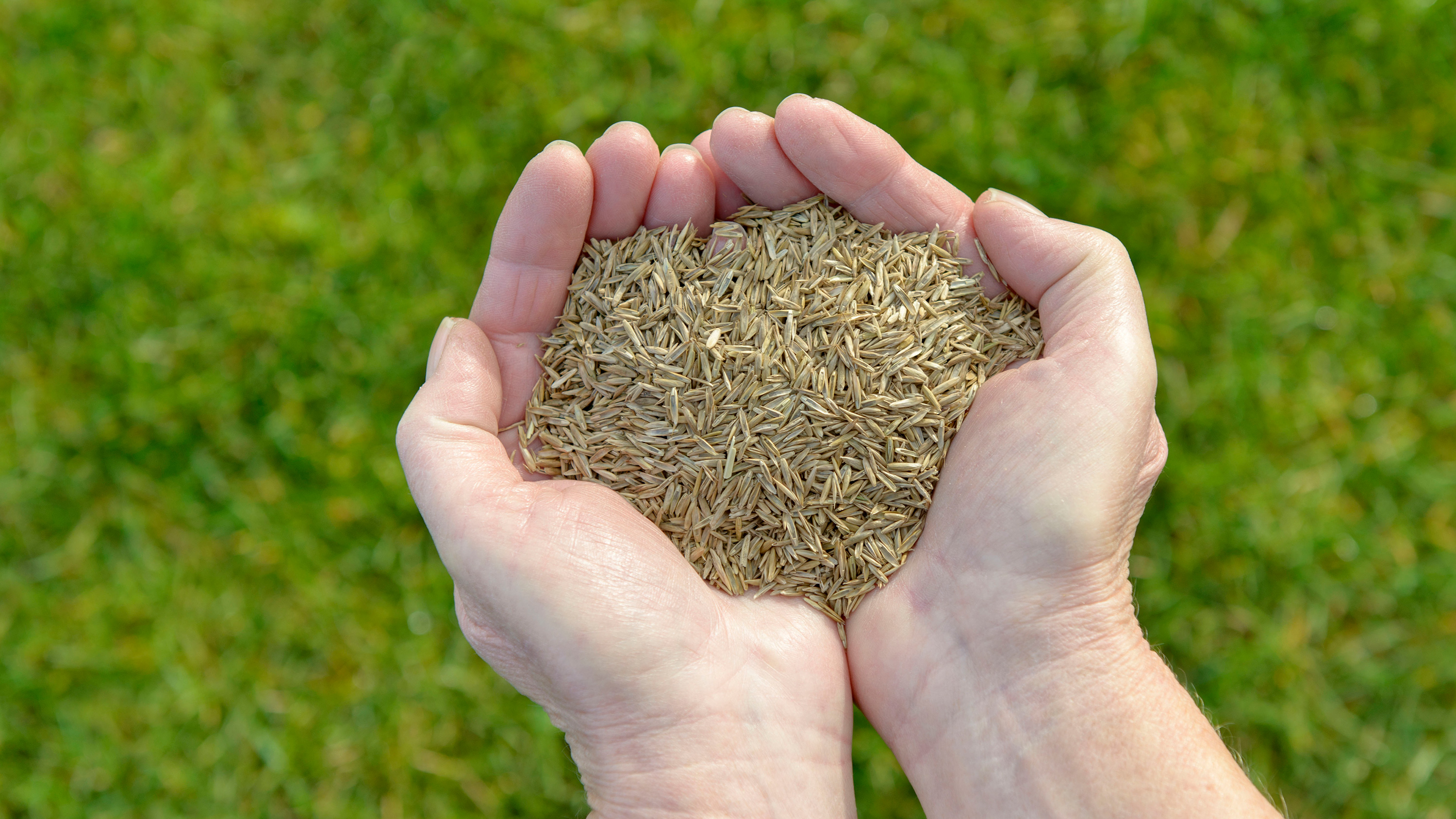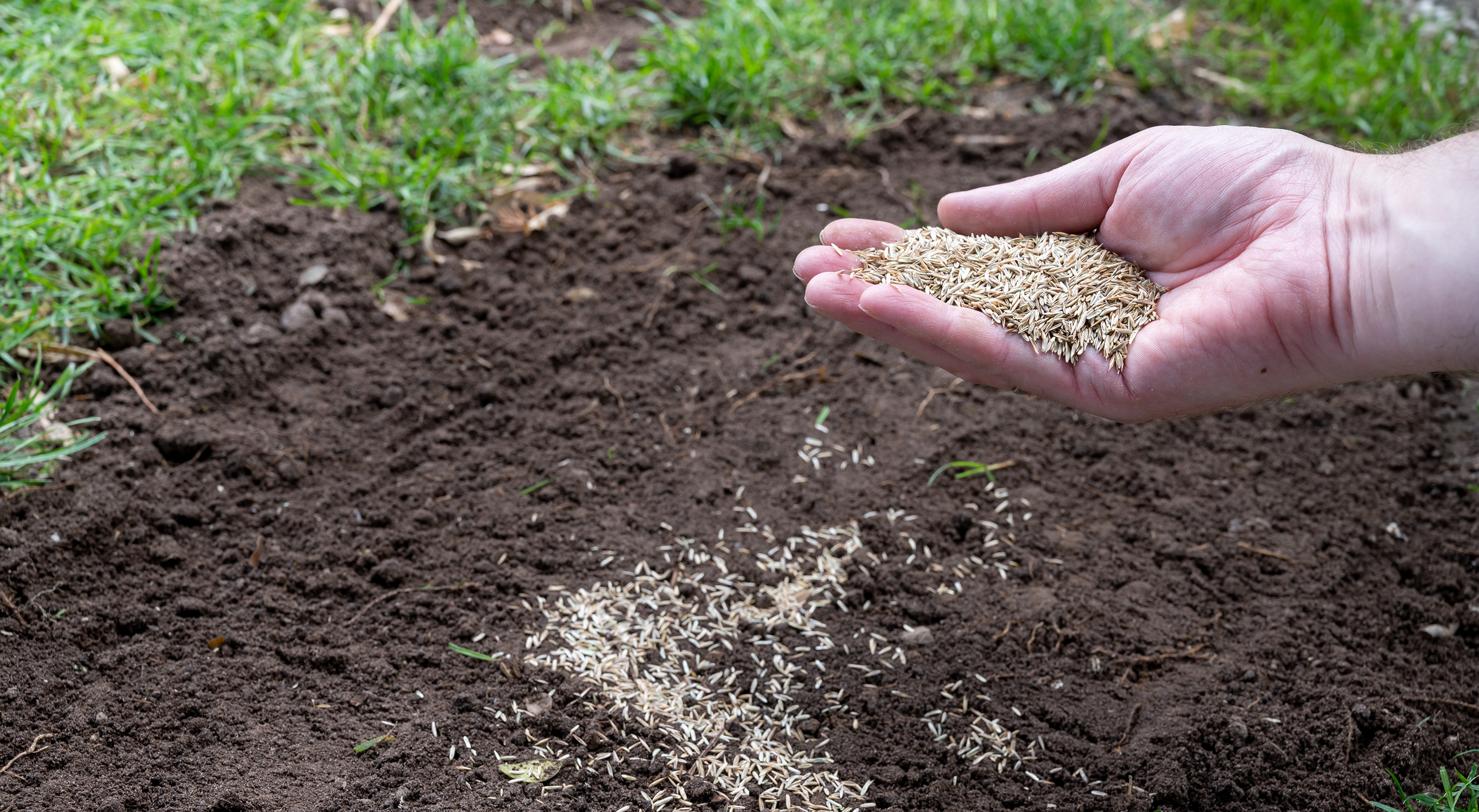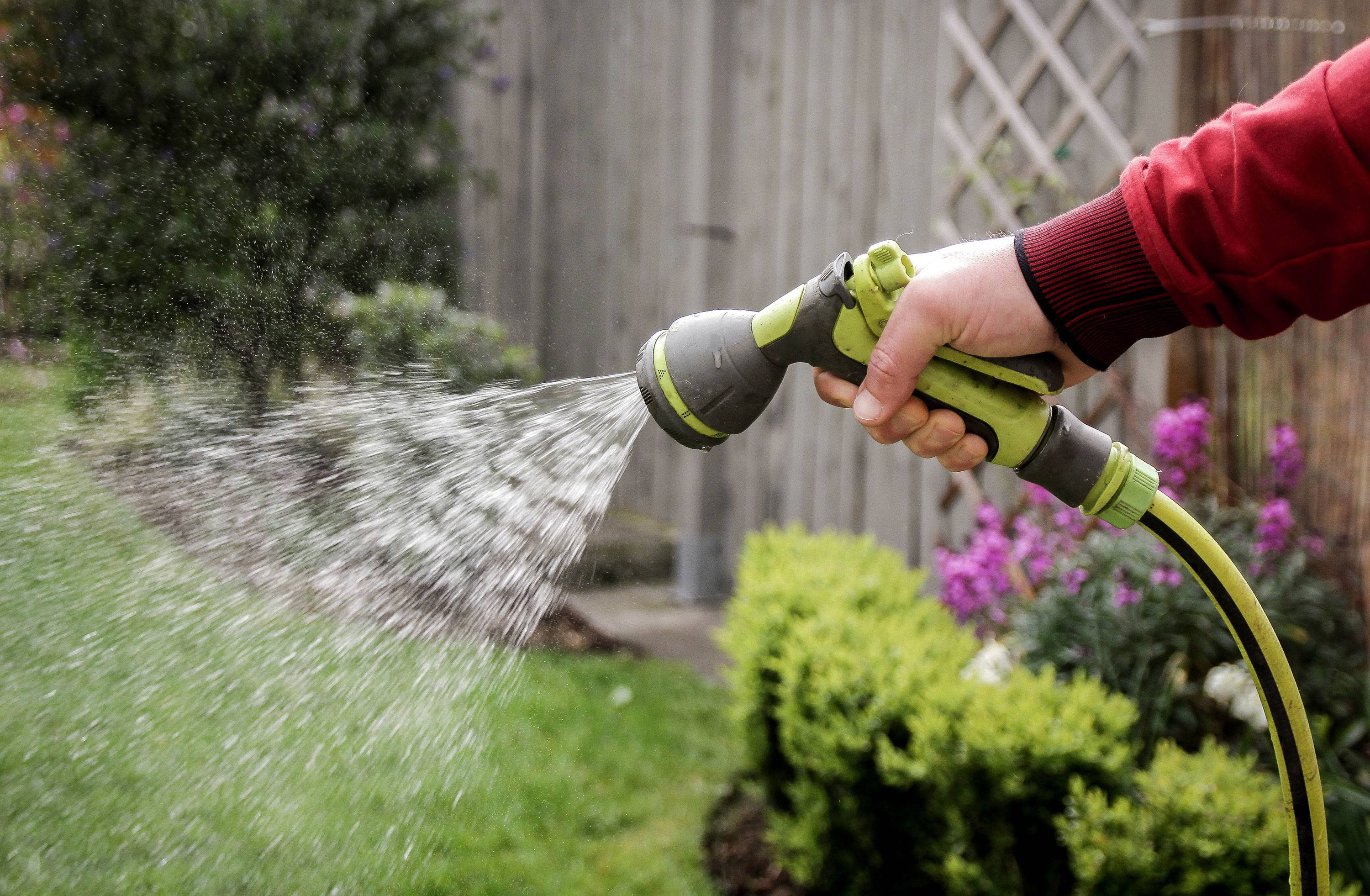How to plant grass seed: the best ways to sow and grow a lawn, fast
Our foolproof guide on how to plant grass seed has all the sowing, watering and mowing tips you need for a gorgeous green lawn


Our guide on how to plant grass seed is a fast track to sowing success. It's just what you need if your lawn's looking a bit patchy, or if you're after a cost-effective solution to add more green to your plot.
A verdant patch of grass is often the star of the show in gardens – just take a look at our lawn ideas to see for yourself. But, you don't necessarily need to wrestle with laying turf to get the look. Sure, turf will give you instant results, but it's a long-winded job, needs laying as soon as it arrives, and prices can stack up.
Grass seed, on the other hand, is much cheaper, can be stored for when you're ready, is quick to sow, and can offer more variety when it comes to choosing your blend. What's more, it's super versatile – you can use it to sow whole lawns, or simply repair bare patches as and when needed.
So, to find out how to plant grass seed for your garden, take a look at our simple step-by-step guide below. And then, to really give your lawn some TLC, why not head over to our guides on how to scarify a lawn, or our spring lawn care tips, too?
When is the best time to plant grass seed?
According to lawn mower specialists Stihl, 'The ideal conditions for growth are a soil temperature of at least 10°C and sufficient moisture and sunshine.'
This means that newly-sown grass grows best in spring, when the soil has warmed up and risk of frost has passed. You can also sow in late summer or early autumn, they add.
How to plant grass seed
1. Loosen the soil

You can do this by hand with a spade or fork, although it's quicker and easier to use a tiller or cultivator to plough the soil.
You'll need to do this to around the depth of a spade head. Take care to remove any weeds, stones and rubbish as you go.
2. Add any amendments
Some soil types may need you to add sand and peat as an 'amendment' to loosen the soil.
If your soil has a low pH of less than 5.5, add some lime to it. This will reduce the acidity levels, which in turn will improve the growing conditions – overly acidic soil can prevent grass getting all the nutrients it needs.
When you're done, use a rake to level the soil.
3. Recompact the soil

'Leave the soil to rest for a few days so that it settles,' says Stihl. 'During dry weather, use a light roller to assist with this process. Recompacting will prevent later subsistence and unevenness.'
Once you're done with the roller, level any uneven spots with your best garden rake to create a top layer of fine, crumbly soil. This is the perfect surface for grass seeds, and gives them the best chance of taking.
4. Distribute your grass seeds

Your next job is to scatter your grass seeds and starter fertiliser. You can do this by hand, or you can use a spreader.
Stihl recommends 'coverage of 15g to 20g per sq metre' and warns that 'if the grass plants are sown too close together, they will impede each other's growth.'
5. Roll in the seeds
Now that your seeds have been scattered, you can work them into the soil to no more than 1cm deep. There are a few tools you can use for the job – a spiked roller, a grid roller, or a good old-fashioned rake.
Rolling in stops your seeds from blowing away, by ensuring they are properly embedded in the soil.
6. Water your grass seeds... and keep them wet

After sowing your seeds, you'll need to water them heavily. But most importantly, you should keep the soil constantly moist for the next three weeks to a month.
Allowing the soil to dry out will potentially prevent the seeds from germinating, wasting all your hard work. One of our best garden sprinklers will come in handy for this step.
'Water the seedlings gently,' says Stihl. 'And walk on the lawn as little as possible.'
7. Only mow when the grass gets to 10cm

You'll need to have a little patience now, and leave the seeds to grow. Don't be tempted to mow your lawn in the first few weeks – wait until the blades of grass reach 10cm before cutting them back.
When you do come to mow your new grass, don't take too much off the top. It's better to mow little and often.
Looking for an update? Head over to our best lawn mower buying guide.
Which grass seed mixture should I choose?

You now know how to plant grass seed, but knowing which grass seed to choose is another matter. To start with, the RHS suggests to think about what you want from your lawn in terms of maintenance and durability.
A good option for family gardens where lawns are regularly used is to go for a general-purpose mix. This is usually a blend of perennial ryegrass, tall fescue, red fescues and browntop explains the RHS. Although such a robust mix will withstand lots of traffic, it will need regular mowing. Our family garden ideas has lots more advice to create a plot suitable for all.
For a more luxurious look, you can go for finer blends. Usually a mix of chewings fescue, strong and slender creeping red fescue and browntop, these blends result in a fine appearance and slow growth rate, explains the RHS. They are not, however, suitable for children, pets, or heavy foot traffic.
You can also find grass blends that are particularly suitable for shade garden ideas.
Whatever mix you choose, aim to get the best quality seed you can afford. Cheaper mixes can be contaminated with weeds or course ryegrasses meant for agricultural use, advises the RHS.

The garden was always a big part of Holly's life growing up, as was the surrounding New Forest where she lived. Her appreciation for the great outdoors has only grown since then. She's been an allotment keeper, a professional gardener, and a botanical illustrator – plants are her passion.
